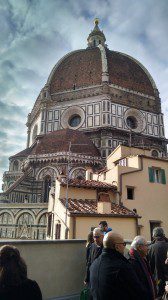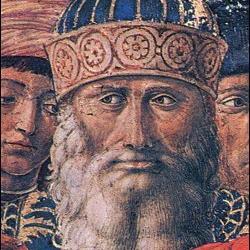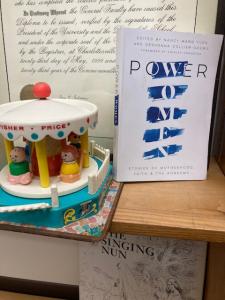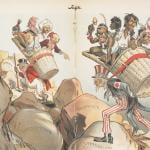The tourist arrives in a city like Florence, Italy, ready to gape at the Renaissance. Though postured to appreciate it, book in hand and eyes directed up, he might find himself at a loss, like the man ahead of me at the Florentine baptistery who, under the mosaic of Christ Pantocrator, asked the Italian leading his private tour, “What is it? I am not religious.”

You only get so far wandering around Santa Croce without a Baedeker, and even very good tourbooks might not suffice. Reading about a cathedral as a display of civic pride, a competitive gesture against one’s rivals (in your face, Siena!), or as simple virtuosity of brush, brick, or chisel does not account for what one actually sees: great beauty, multivalent meaning.
The cathedral of Florence, Santa Maria del Fiore, is a place where what you need, in order to get what came to see, is some explanation of what it is. American priest and art historian Monsignor Timothy Verdon helps. Verdon helps visitors find Florence not only more comprehensible but more beautiful through his writing and his work in the the newly reopened Museo dell’ Opera del Duomo (Museum of the Works of the Cathedral). If that sounds like the title of a fusty barn that a day tripper would be loath to visit, it is because such spaces sometimes are just that: warehouses of religious art no longer serviceable, originals of artworks too valuable to be used in worship, or antique tools (yawn) used in building high ceilings or marble floors.
This museum is the opposite. Its location is perfect and the space is spectacular: three floors of imagination and explanation about the human skill, religious commitment, and community collaboration that made sacred space. The first vast room holds the bronze doors of the baptistery, carved by Lorenzo Ghiberti and nicknamed by Michelangelo the “Gates of Paradise”; they lead visitors into the physical space as baptism ushers Christians into the life of faith. Room after room of sculpture, painting, marble fragment, mosaic are not boring at all. The explanatory material not only describes the art but tells the story of salvation: prophets and evangelists–identified as such!–as you enter, penitence personified in Donatello’s Magdalene, Psalm 150 painted in gold on the wall by Luca della Robbia’s cantoria, whose carvings illustrate that Laudate Dominum. The area devoted to the brash construction of Brunelleschi’s spectacular dome boasts all the dazzle one could desire. And those antique machines that helped hoist it up? Admire them, not only as engineering marvels but as the tools that allowed the building of this monument minus brutalizing labor.
The museum is a compelling example of winsome catechesis. It maintains, rightly, that the visitor will not really apprehend the site without some empathetic grasp of the faith that motivated its building. It further suggests that this theology in stone is not frozen in stone but living. The visitor has questions; the museum answers them.
The end of the museum tour rewards the guest with a terrace view of the cathedral itself, mostly the dome, a look down at the crowds below dimly perceiving the space they are in. When you reach the balcony you understand something differently about where you are; you see it from better angle, higher.












